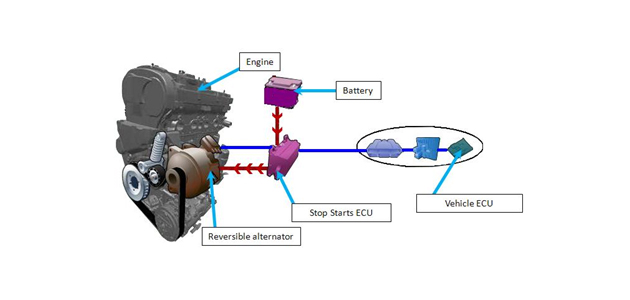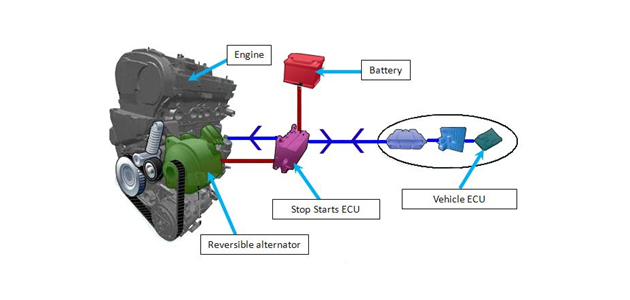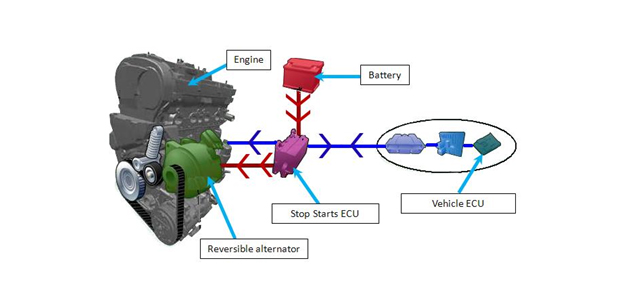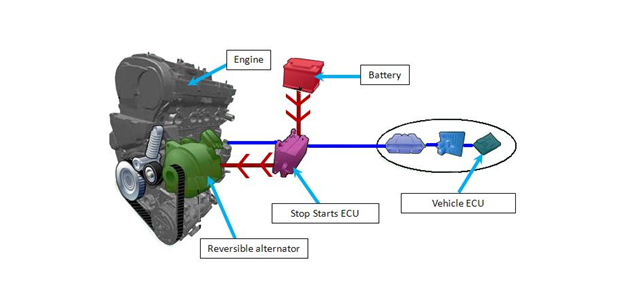
The StARS system is a reversible alternator and replaces the conventional alternator and starter motor. The reversible alternator provides the function of alternator and starter combined. The new design allows the conversion of electrical energy into mechanical energy and visa-versa.
The advantages of this new system are:
- The engine is cranked more rapidly
- The consumption is reduced at start up
- Fuel savings are made during normal driving (2-3%) and traffic (up to 15%)
The new system works similar to the conventional alternator where the later applications would have the charge rate controlled by the vehicle ECU (computer controlled and smart charge systems).
The new system now has a separate ECU which administers the reversible alternator and the vehicles engine. When the vehicle is slowed down by the user the ECU analyses the speed of the car and when/if the speed falls under 5mph, the ECU switches off the engine. Once the brake pedal is released, the ECU then gives an order to start the engine again. The reversible alternator plays the part of the starter motor to achieve this.
The system is designed to work in five phases:
1. The vehicle is switched on and the vehicle’s ECU will crank/start the engine. This is done by the battery providing electrical energy and the reversible alternator then acts as a starter motor and helps to crank the engine.
 3. Once the vehicle speed has been reduced below 5mph by braking the StARS ECU gives an command to stop the engine.
3. Once the vehicle speed has been reduced below 5mph by braking the StARS ECU gives an command to stop the engine.
4. Once the brake pedal has been released the StARS ECU then gives a command to start the engine again. The battery provides electrical energy and the reversible alternator plays the part of the starter motor and cranks then engine.

5. The vehicle is switched off and the vehicle ECU will stop the engine.










